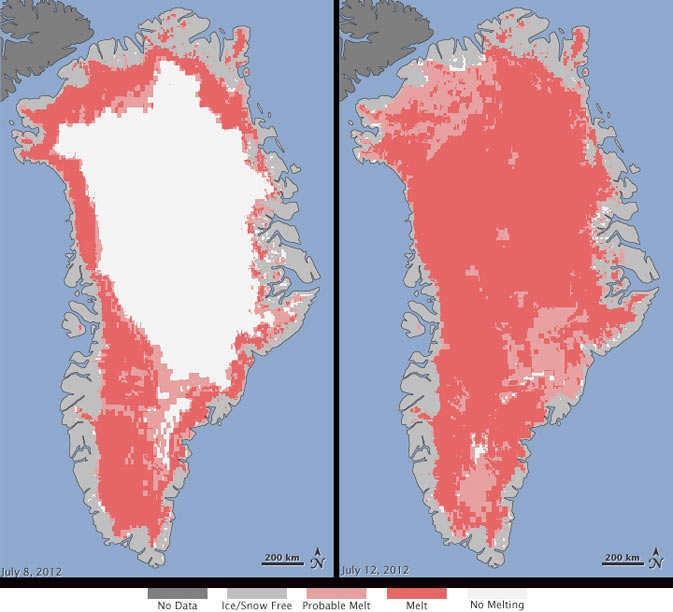A new study released by Ohio State University shows that Greenland's glaciers have shrunk so much that they will continue to shrink even if the global warming we are living in today stops.
This warning, published in the journal Nature Communications Earth and Environment on August 13, means that the annual snowfall rate is no longer able to keep pace with melting glaciers flowing into the oceans.
40-year-old data
Michalia King, lead author of the study and a researcher at the Bird Polar Center and Climate Research at Ohio State University and her team, analyzed nearly 40 years of satellite observation data for more than 200 glaciers pouring into the ocean around Greenland.
The research focused on comparing the amount of snow melting from glaciers or glaciers in Greenland to the ocean, and the amount of annual snowfall, which is a source of renewal of glaciers each year. They found that the ice discharged into the ocean far exceeds the rate of snow accumulating on the surface of the ice sheet.
Back in the 1980s and 1990s, researchers were able to monitor a state of balance between the rate of accumulated snow and the annual rate of snowmelt, which was estimated at 450 billion tons of ice annually, which kept the ice cover intact at the time. However, the rate of melting has increased significantly over a short period of between 5 and 6 years.
Glacier retreat
The researchers noticed that the amount of ice lost annually has increased steadily since 2000, so that the glaciers were losing about 500 billion tons annually, but the rate of snowfall did not increase. This means that the ice sheet is decreasing more quickly than it is compensated for.
They found that Greenland's great glaciers have retreated by an average of 3 kilometers over the past 35 years.
Thus, the area of ice-water contact increased, so that the warm ocean water melts the glacier ice, and more importantly, it increases the retreat of glaciers and impedes the restoration process again.
This means that even if humans miraculously managed to stop climate change in its tracks, the ice lost from glaciers will likely exceed the volume of ice gained from snow accumulation, and the ice sheet will continue to shrink for some time.
The shrinking of glaciers in Greenland is a problem for the entire planet, because the ice that melts or separates from the Greenland ice sheets will end up in the Atlantic Ocean, in other words, this melting ice will be discharged to all the world's oceans, which will contribute to the rise in sea level.
Finally, in order to help the reader imagine how extreme it is, we can say that - according to last year's data - the melting of the Greenland ice sheet caused the ocean level to rise by 2.2 mm in just two months.

